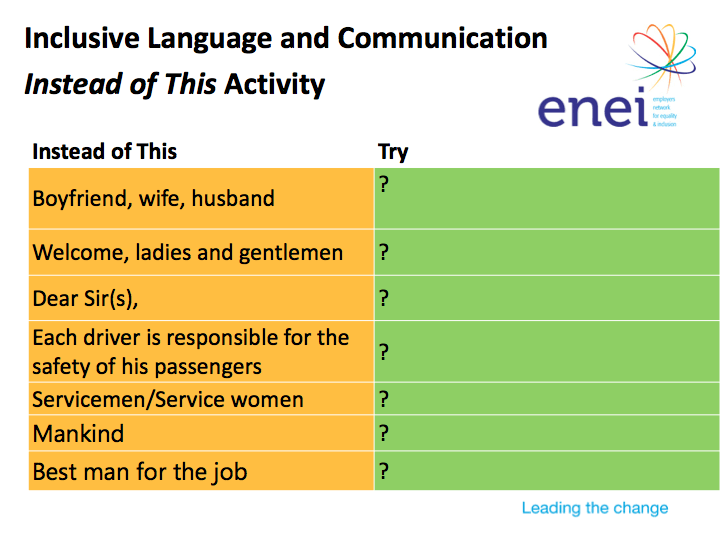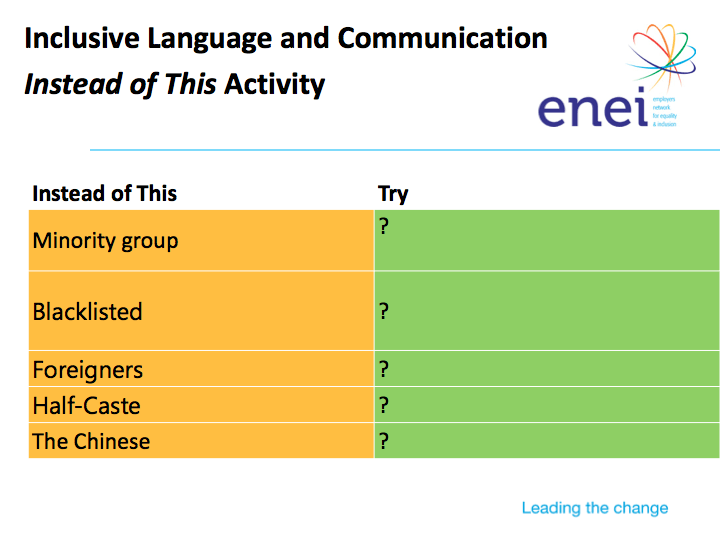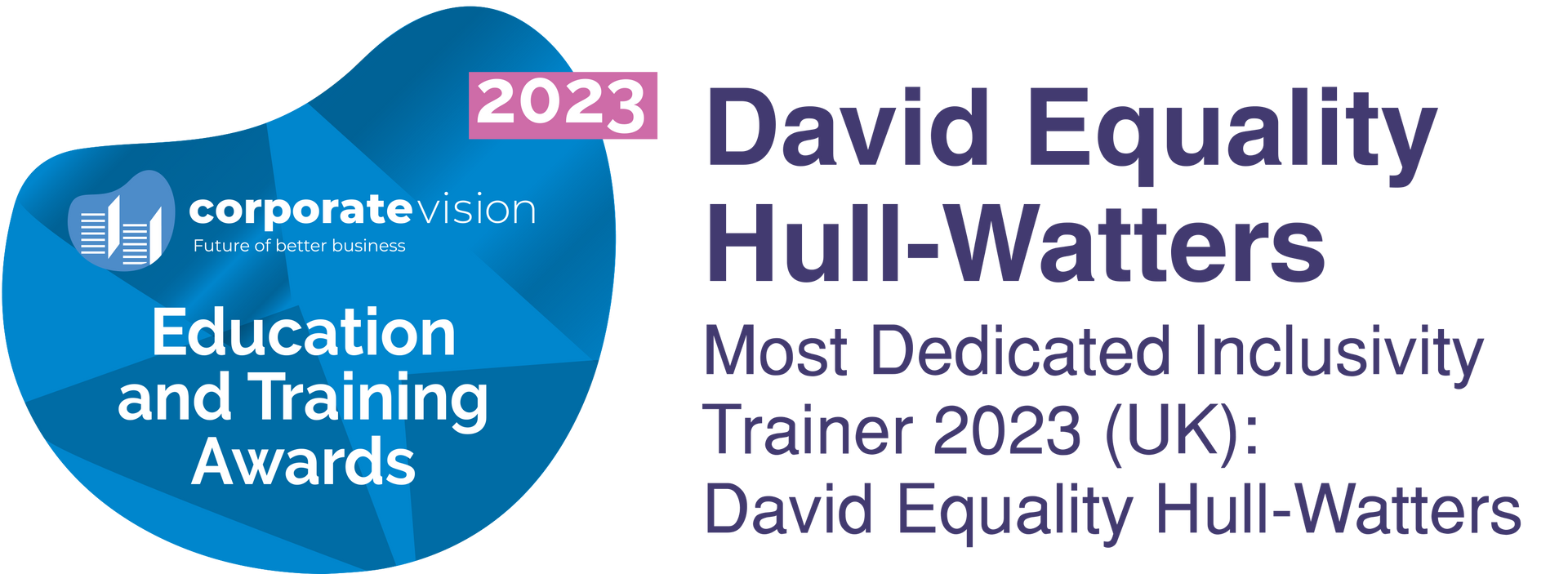Principles of Inclusive Language in Practice
Principles of Inclusive Language in Practice
Instead of This
Breakout Activity
- The person who currently lives farthest from their city or country of birth.
- The facilitator will decide on a speaker who will feedback to the whole group, when we return to the Main Room
- Please make sure that all voices are heard
Objective:
- Collaboratively solve common linguistic errors.
- Consider some Principles of Inclusive Language in relation to Protected Characteristics.
Instead of This
Breakout Activity
- The person who currently lives farthest from their city or country of birth.
- The facilitator will decide on a speaker who will feedback to the whole group, when we return to the Main Room
- Please make sure that all voices are heard
- Collaboratively solve common linguistic errors.
- Consider some Principles of Inclusive Language in relation to Protected Characteristics.
There are many Principles of Inclusive Language and Communication
Here is my Summary for Guidance
- Avoid blanket terms
- Use person-centred language
- Consider whether language used implies “normalcy”
- Avoid terms which equate the person with a particular characteristic
- Avoid stereotyping; positive or negative generalisations
- Avoid idioms, jargon, and acronyms
- Avoid phrases that suggest victimhood
- Avoid outdated terms
- Mention characteristics like gender, sexual orientation, religion, racial group or ability only when relevant to the discussion
- Be aware of benevolent ableism/racism/sexism - being effusive about the achievements of people with a specific characteristic when they are going about their daily life and work
We will now take each Protected Characteristic (Disability, Sex/Gender, Race and Ethnicity) to decide on alternative words or phrases for those given.
Make a note of your team's responses to share when we return to the Main Room.



















